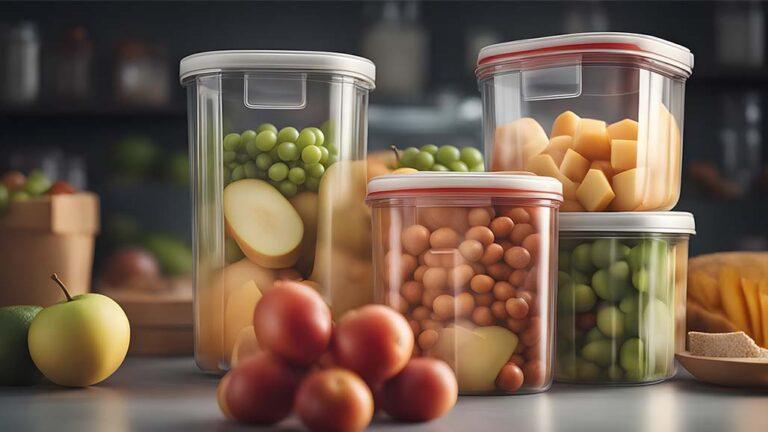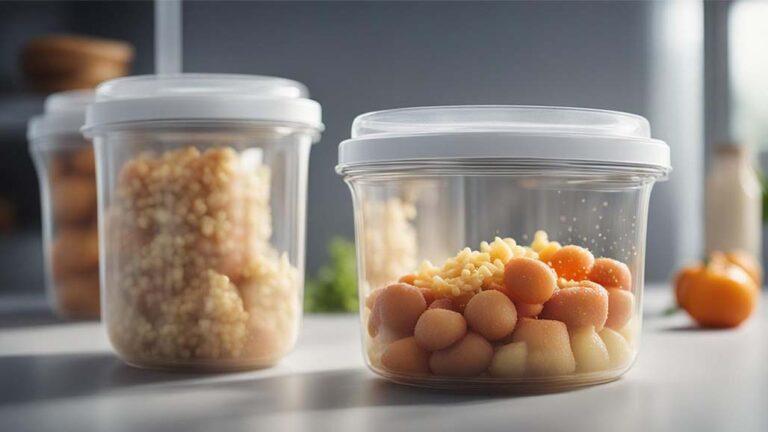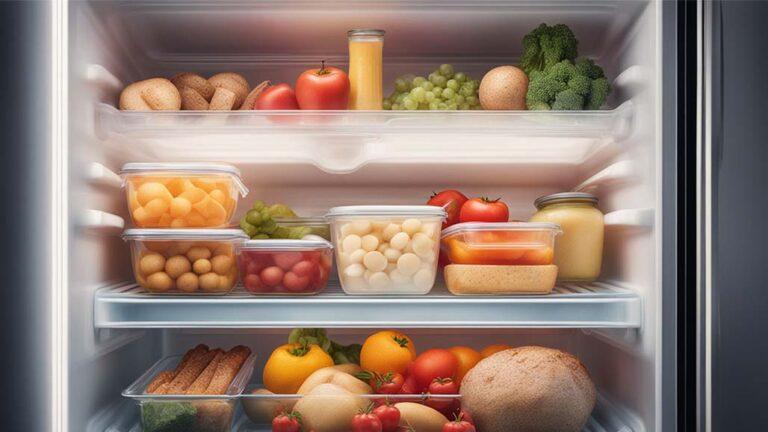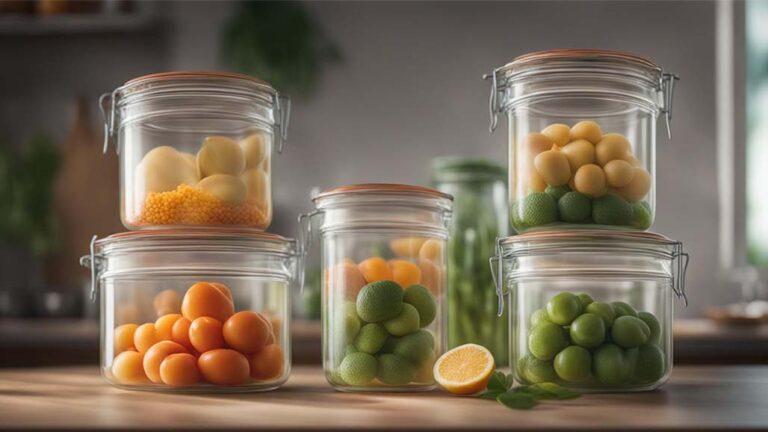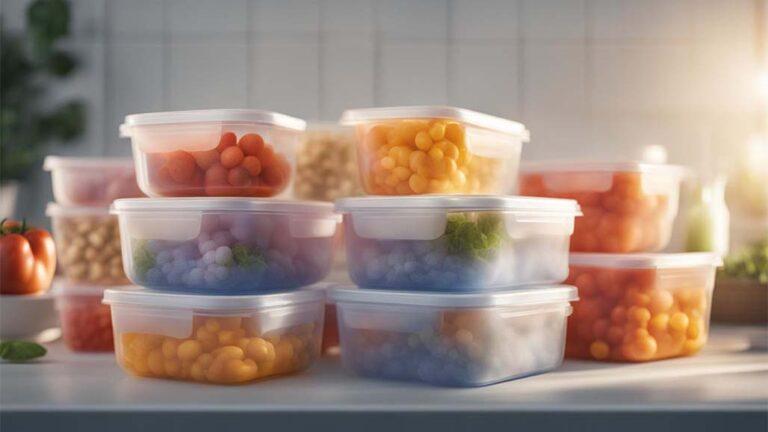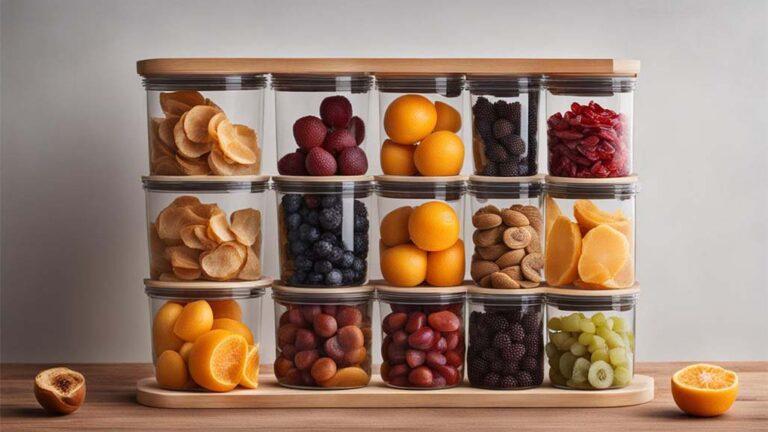
Introduction:
Containers for storing bulk food for a long time are a crucial component of any preparedness plan. Whether you are preparing for a natural disaster navigating economic turmoil or simply attempting to reduce food waste these containers are crucial for ensuring you have access to a reliable food supply when you need it most.
We will delve into the world of long term bulk food storage containers in this thorough overview. We will go over the many options their pros and cons and offer insightful information on why long term bulk food storage is important. You will have the information necessary to choose the ideal containers for your food storage needs by the end of this adventure.
Types of Containers for Long-Term Bulk Food Storage:
Not all containers are made equal when it comes to the long term storage of bulk foods. The quality and shelf life of your stored provisions can be considerably impacted by the material and design of the container you choose. Let us examine the three main types of containers frequently used for bulk food storage for an extended time
Glass Containers:

Glass is renowned for its durability and ability to preserve the freshness of food while being kept. Due to their extensive range of sizes and shapes, they are ideal to meet different storage needs. Here are some significant pros and cons of storing bulk foods in glass containers over the long term.
| Pros | Cons |
|---|---|
| Food quality preservation: Glass containers offer a great barrier against oxygen and moisture ensuring that your food stays fresh and preserves its nutritional content. | Fragility: Glass containers can break if mishandled or dropped posing a risk of injury and food loss. |
| Non Toxic: Glass is inert and will not introduce or transfer any dangerous chemicals to your food, unlike other plastics that may do so. | Weight: Glass containers are heavier than their plastic counterparts making them less portable. |
| Safe for all types of food: Glass is inert and won’t react with acidic or alkaline foods. | Cost: High-quality glass containers can be more expensive upfront. |
| Versatility: A wide variety of food items such as grains, pasta, canned foods, and even liquids can be stored in glass containers. | |
| Sustainability: Glass containers are reusable and fit with lifestyles that emphasize the environment. |
Plastic Containers:

Bulk food can be stored for a long time in plastic containers because they are lightweight and affordable. There are different sizes and styles available allowing them to be suitable for various storage needs. We will talk about the pros and cons of utilizing plastic storage containers to preserve food over a lengthy time.
| Pros | Cons |
|---|---|
| Affordability: Plastic containers are generally more budget-friendly than glass or metal options. | Durability: While durable, plastic containers can degrade over time, potentially compromising food freshness. |
| Lightweight: Their lightweight nature makes plastic containers easy to handle and transport. | Potential Chemical Leaching: Some plastics may leach harmful chemicals into food, especially when exposed to heat or sunlight. |
| Variety: Plastic containers come in diverse shapes and sizes, catering to various storage requirements. | Limited Shelf Life: Plastic containers may have a shorter lifespan compared to glass or metal counterparts. |
Metal Containers:

Metal containers are known for their robustness and suitability for long-term bulk food storage. Typically made of stainless steel or tin, these containers offer unique advantages and disadvantages.
| Pros | Cons |
|---|---|
| Durability: Metal containers are highly durable and resistant to breakage or degradation. | Weight: Metal containers tend to be heavier, limiting their portability. |
| Rodent-Proof: Metal containers provide excellent protection against rodents and pests. | Limited Transparency: Unlike glass or plastic, metal containers are not transparent, making it challenging to identify their contents easily. |
| Airtight Seals: Many metal containers come with airtight seals, preserving food quality effectively. | Cost: Quality metal containers can be relatively expensive. |
Why Long-Term Bulk Food Storage Matters:
Let’s take time to comprehend why long-term bulk food storage is a significant issue before going further into the characteristics of each container type.
• Emergency Planning: Unexpected occurrences like natural disasters, economic downturns, or supply chain interruptions might result in empty store shelves. Bulk food storage for a long time guarantees you will always have access to food in times of need.
• Cost-Efficiency: Food purchases made in bulk frequently result in cost savings. You can lower your overall food costs by taking advantage of sales and discounts when you store food for a long time.
• Food Security: Having a supply of durable supplies on hand gives you peace of mind. Regardless of the external conditions, you may relax knowing that your family’s nutritional needs are being met.
• Reduced Food Waste: Better inventory management is encouraged by long-term storage, which lowers the likelihood of food waste. You may cycle stored goods to reduce waste and plan your meals wisely.
• Self-Reliance: Bulk food storage for a long time gives you the power to manage your food supply. You develop greater self-reliance and resilience as opposed to exclusively depending on outside resources.
• Sustainability: You can lead a life that is healthier by cutting down on food waste by storing the food for a long time. Reduced food waste cuts resource waste and its impact on the environment.
We can now more thoroughly discuss the many types of containers that are available as well as their advantages and disadvantages now that we have established the significance of long-term bulk food storage.
Maintaining Your Long-Term Food Storage:
It is crucial to know how to handle your stored supplies after choosing the right long-term bulk food storage containers. Your stored food will last a long time and be of high quality if it is properly maintained. Here are some important points to make sure.
• Temperature Control: Keep your containers out of direct sunlight in a cool, dry location. Temperature changes may shorten the food you’ve stored healthy. The best temperature range for your storage container is between 50 and 70 degrees Fahrenheit (10 and 21 degrees Celsius).
• Rotate Your Inventory: Use the “first in, first out” (FIFO) principle to reduce food waste. Place new items in the back of your storage and move outmoded items to the front when adding new items. In this manner, your stock is continually being used and replenished.
• Check for Damage: Frequently check your containers for indications of damage, such as breaks in the seals or fractures. Food spoilage and waste can result from damaged containers.
• Pest control: Protect your stored food by taking preventative measures if you reside in a pest-prone location. Consider utilizing pest-resistant containers or putting food-safe pest deterrents in your storage area.
• Label and Date: Mark the contents and the date of storage on each container. This makes keeping track of products’ expiration dates and identifying them simple.
• Seal Maintenance: For containers that have seals, make sure to check them occasionally and replace them as necessary. Airtight seals must be used to maintain food quality.
• Humidity Control: To lower humidity and avoid moisture-related problems like mold or spoiling, use desiccant packs or moisture-absorbing goods in your storage area.
Choosing the Best Long-Term Bulk Food Storage Containers:
The sort of container that best suits your demands for long-term bulk food storage should be chosen next. Your main priorities and other considerations strongly affect your decision. Here are some important key points.
• Food Type: Take into account the kinds of food you intend to preserve. Containers made of glass or plastic can be useful for storing things like grains, legumes, and dried products. However, metal containers can be a preferable option if you plan to store liquids or are worried about bugs.
• Storage Location: Think about where you’ll be storing your containers. If space is limited, lightweight plastic containers may be more practical. If you have a dedicated pantry or storage area, you can opt for heavier glass or metal containers.
• Budget: Your budget plays a significant role in the container selection process. Plastic containers are generally the most budget-friendly option, while high-quality glass and metal containers can be more expensive.
• Durability: If you anticipate rough handling or extreme storage conditions, metal containers are the most durable choice. Glass containers, while fragile, can still be a good option if stored carefully.
• Safety Concerns: If you have concerns about chemicals leaching into your food, look for containers labeled as BPA-free and designed specifically for food storage.
• Airtight Sealing: For optimal long-term storage, choose containers with airtight seals. This feature helps prevent moisture, oxygen, and pests from compromising your stored provisions.
Additional Considerations for Long-Term Food Storage:
The process of creating a long term food storage strategy demands constant attention to detail Additional factors to keep in mind to make sure your plan is thorough and efficient are as follows:
Container Selection: For the various sorts of food, select the proper containers. For dry commodities like grains and pasta, use airtight containers. For dehydrated and freeze-dried foods, use vacuum-sealed bags. As long as they are still in good shape, canned products are best kept in their original container.
Labeling: Write the contents, the date of purchase or expiration, and the recommended storage conditions on every container. This avoids misunderstanding and makes it easier to spot things that require rotation.
Location for Storage: Choose a cool, dark, and dry area for your food storage. Avoid locations with high humidity and fluctuating temperatures because they can shorten shelf life. Closets, pantries, and basements are popular options.
Pest control: Take precautions to stop vermin and insects from getting into your food storage. Think about utilizing rodent-proof bins, traps, or diatomaceous earth made for use in food.
Management of Allergens: Watch out for cross-contamination if any family members have food allergies or sensitivities. To avoid unintentional exposure, store allergen-free products separately and clearly label containers.
Preservation Techniques: Learn many methods of food preservation, including canning, freezing, and dehydrating. Perishable goods including fruits, vegetables, and meats can have their shelf lives extended using these techniques.
Herb and Spice Storage: Remember to include a variety of herbs and spices in your food store while planning your herb and spice stockpile. Your meals will taste better and be more interesting with their addition of flavor and variety.
Storage Duration: Storage Check the expiration dates on your stored items frequently. To reduce waste and maintain freshness, rotate and use products that are getting close to their expiration date.
Alternative Techniques for Cooking: In an emergency, you might not have access to your regular kitchen tools. Make sure you have the proper fuel or energy sources before considering alternative cooking techniques like solar ovens, camp stoves, or wood-burning stoves.
Regular Rotation: Rotate food items that are getting close to their expiration dates into your daily meals as part of your routine. In your food store, swap them out for new stuff.
Consideration for Children and Pets: Children and dogs should be taken into account, so make sure your long-term food storage strategy includes provisions for their needs if you have either. Pet food, diapers, and baby formula are a few examples of this.
Evaluate Your Plan: Test your long-term food storage strategy periodically. To make sure your family can rely on the preparations you’ve made, simulate emergencies.
Community Involvement: Participate in your neighborhood emergency response teams and the local community. Cooperate with your neighbors to exchange information and supplies during emergencies.
Financial readiness: Maintain an emergency fund to set aside money for unforeseen expenses. This might assist in covering unforeseen costs for food storage and other essentials.
Documentation: Within your storage space, keep sensitive papers like driver’s licenses, insurance policies, and prescriptions in a safe, waterproof container.
A thorough long-term food storage strategy goes beyond simply accumulating provisions. It necessitates precise planning organization and a commitment to always learning and being prepared.
By taking into account these extra factors and being proactive you can ensure that your food storage plan is resilient and able to address any issues that may arise.
Conclusion:
When selecting long term food storage containers. there are many additional aspects to take into account in addition to the container type. These include the kind of food where it will be stored the price range, how long it will last, any safety issues, and its sealing abilities.
• Glass containers: For keeping dry items like beans, rice, and pasta, glass containers are a suitable choice. They are resilient, translucent, and non-reactive, making them simple to view within. They might, however, be broken if dropped.
• Plastic: Glass containers are more expensive than plastic containers. They are portable and simple to stack. Selecting plastic that is non-toxic for use in food is crucial since some plastics can leach toxins into food.
• Metal: The most resilient choice is metal containers. They can withstand wetness and pests. They might, however, cost more than glass or plastic.
You may choose the sort of container that is best for you by being aware of the benefits and drawbacks of each type and taking into account all of these elements. It goes beyond simply storing food in long term bulk storage containers. It is about taking charge of your food security and creating a more flexible healthy way of lifestyle. These containers are your allies in the fight for a more resilient future whether you are prepared for catastrophes or just trying to cut down on food waste.

